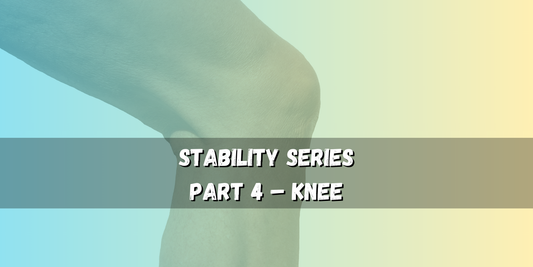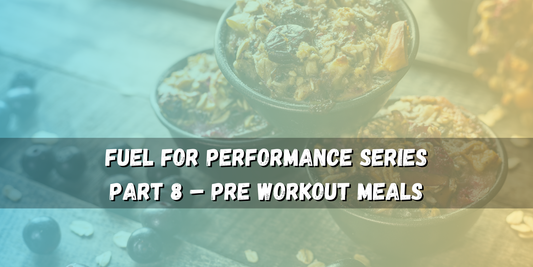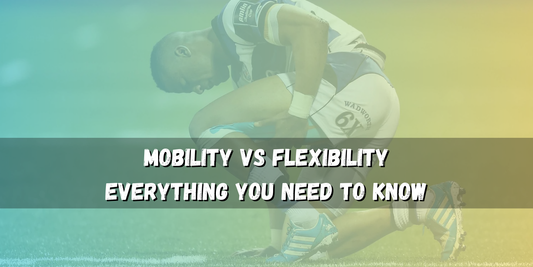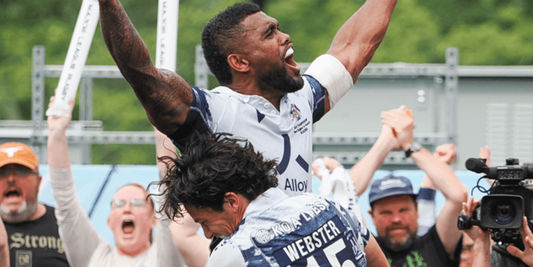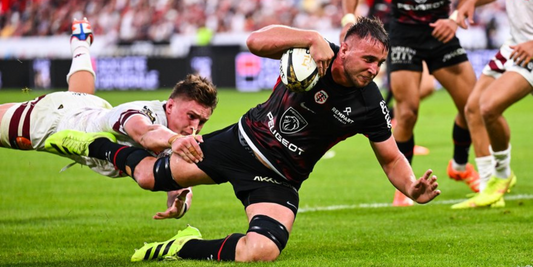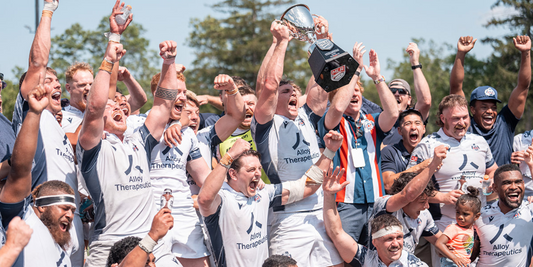Knees take a beating in rugby. From sidesteps and tackles to scrums and sprinting, the knee joint is constantly under stress. But here’s the truth: most knee injuries don’t start at the knee—they start above or below it, often due to poor control at the hips or ankles. That’s why knee stability is about the whole chain, not just the joint itself.
In Part 4 of our Stability Series, we’re focusing on knee stability—how to train it, why it matters, and how to reduce the risk of injury while building better movement.
Check out the rest of the series:
- Part 1: Core Stability – Strength & Control
- Part 2: Hip Stability – Power & Alignement
- Part 3: Ankle Stability – Balance & Support
- Part 5: Shoulder Stability – Contact & Strength
- Part 6: Neck Stability – Impact & Safety
Let’s dive in.
WHAT IS KNEE STABILITY?
Knee stability is your ability to control the knee joint through movement and under load—especially when stopping, landing, cutting, or changing direction. It’s less about the knee itself and more about how the surrounding muscles coordinate to protect it.
Key contributors to knee stability:
- Glutes (especially glute medius) – Prevent knee valgus (inward collapse)
- Hamstrings & Calves – Assist in deceleration and control
- Vastus Medialis Oblique (VMO) – Supports patellar tracking
- Core & Hip Rotators – Keep the pelvis and femur aligned
When these muscles are weak or poorly coordinated, the knee is exposed to high-risk movement patterns.
WHY KNEE STABILITY MATTERS FOR RUGBY PERFORMANCE
1. Injury Prevention
ACL tears, MCL sprains, and meniscus damage are common in young athletes. Most happen during deceleration, cutting, or awkward landings—all moments that require high knee stability.
2. Controlled Movement & Agility
Sharp footwork and lateral speed rely on stable knees that don’t wobble under pressure.
3. Joint Longevity
Good mechanics now = healthier knees long-term. Avoiding breakdown in teenage years is key for lasting performance.
4. Confidence in Contact
If an athlete doesn’t trust their knees, they won’t commit fully in contact. Knee stability builds that trust.
COMMON CAUSES OF KNEE INSTABILITY
Based on both coaching experience and corrective exercise principles, here are some of the most common contributors to poor knee stability:
- Weak glutes and external hip rotators (especially glute medius)
- Limited ankle mobility and dorsiflexion range
- Poor pelvic control and hip-knee alignment
- Imbalances between quadriceps and hamstrings
- Inhibited motor control during deceleration and direction changes
These issues don’t just impact performance—they increase the risk of ligament sprains, tendon overuse, and patellar tracking problems. Addressing them is key to long-term knee health.
THE CHAIN REACTION: WHAT HAPPENS WITHOUT KNEE STABILITY
- Weak Glutes or Core → Femur Falls Inward → Knee Valgus → ACL Risk
- Tight Ankles or Hips → Compensated Movement → Knee Joint Overload
- Poor Landing Control → Excessive Shear Force → Patellar Pain or Ligament Injury
Bottom line: knee pain is usually a symptom, not the root problem.
KNEE STABILITY ROUTINE FOR RUGBY ATHLETES
Training the knee means training the chain—hips, glutes, hamstrings, calves, and movement control.
Step 1: Activation & Alignment (3–5 Minutes)
- Focus: Fire up glutes and VMO before movement
- Exercises: Glute Bridge with Band at Knees, Wall Sit with VMO Focus (Towel Squeeze), Terminal Knee Extension with Band
Step 2: Single-Leg Strength & Control (5–10 Minutes)
- Focus: Balance, tracking, and eccentric control
- Exercises: Step-Downs (Focus on Knee Alignment), Rear-Foot Elevated Split Squats, Single-Leg Glute Bridge with Toe Tap
Step 3: Landing Mechanics & Power (5–8 Minutes)
- Focus: Sport-specific control under stress
- Exercises: Jump & Stick (Double and Single Leg), Lateral Bounds with Controlled Landings, Skater Hops with Pause
Train 2–3 times per week—especially in-season, when knees are under constant load.
WATCH THE FULL ROUTINE
We’ve recorded the full Knee Stability Routine on our YouTube channel to walk you through every step—activation, balance, coordination, strength and plyometric drills.
Watch it now on our Peak Rugby YouTube Channel:
FINAL THOUGHTS
Strong knees aren’t just about lifting heavier—they’re about moving smarter. Stability is what keeps knees safe when pressure hits. And for young athletes, building that stability early is the key to staying healthy and performing with confidence.
Next week, we’ll shift focus to the upper body with Shoulder & Scapular Stability—crucial for passing, tackling, and contact durability.
Need More Help?
Check out our Rugby Workout Plans and Customized Training Programs to build a stronger, more resilient body.
This wraps up Part 4 of our Stability Series: Knee Stability. If you found this post helpful, make sure to:
- Like and share this post with fellow rugby players
- Bookmark the blog to stay updated on the next parts of the series
-
Follow Peak Rugby on X, Facebook and subscribe to the YouTube Channel for more rugby-specific training, mobility, and recovery tips.
Stay strong, keep pushing forward, and keep working on your stability!










